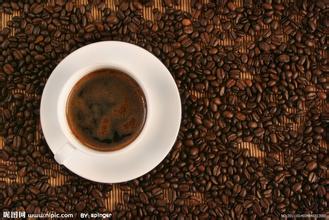Guatemala coffee bean producing area
Guatemala is bordered by Mexico to the north, Honduras and El Salvador to the south, the Caribbean to the east and the Pacific Ocean to the west, surrounded by mountains and seas, with tropical rain forests, volcanic geology, plateau valleys and ever-changing microclimate. Agriculture is the main source of economy, and the main agricultural product is coffee. Guatemalan coffee once enjoyed a reputation as the best quality coffee in the world. The coffee beans here are full of grains and delicious and balanced.
There are few places in the world that offer a variety of high-quality coffee beans like those produced in Guatemala. Guatemalan coffee beans are famous for their elegant, sour, clean, well-structured, sour apple, berry, jasmine, orange peel, green pepper, sweet and sour fruit, sweet chocolate, and even smoky aftertaste. Such a rich regional flavor can be attributed to the unique natural conditions of the producing area, including different climate changes in each region, rich soil formed by volcanoes, abundant natural water resources, high-altitude mountains and shady and moist forests.
(landscape of coffee growing area)
Coffee was really introduced into Guatemala in 1750 by Father Jesuit, and the coffee industry was developed by German colonists at the end of the 19th century.
(harvested coffee berries)
Guatemala has seven main coffee producing areas: Antigua, Coban, Atitlan, Huehuetenango, Fraijanes, Oriente, and San Marcos.
The four producing areas of Antigua, Attland, San Marco and Freihanes belong to volcanic geology. In addition, Koban and Weitnango, the three producing areas of New Oriental, belong to the climate of non-volcanic highlands or tropical rain forests. Guatemala is home to more than 300 microclimates, making it the largest in the world.

Important Notice :
前街咖啡 FrontStreet Coffee has moved to new addredd:
FrontStreet Coffee Address: 315,Donghua East Road,GuangZhou
Tel:020 38364473
- Prev

Colombia coffee growing environment
Growing Environment Colombia's favorable climate provides a true natural pasture for coffee. Coffee trees in Colombia are mainly cultivated in the Andes mountains, on steep slopes up to 1,300 meters above sea level, where the annual temperature is about 18 degrees Celsius, the annual rainfall is 2000 to 3000 mm, the latitude is 1 - 11 15, the longitude is 72 - 78, and the specific altitude range can exceed 2.
- Next

Guatemala Coffee Manor
The "Las Rosas de Oakland Manor" in San Marco, Guatemala, it is said that Oakland Manor covers an area of 45ha's next harvest with a target of 120 bags. It pays more attention to quality than harvest, so it is very limited by climate, rainfall and other factors. About 40 harvesters were employed from the village during the harvest period. These people were not people who went out to earn money, but the whole family sent out to harvest. Including the small, of course.
Related
- Does Rose Summer choose Blue, Green or Red? Detailed explanation of Rose Summer Coffee plots and Classification in Panamanian Jade Manor
- What is the difference between the origin, producing area, processing plant, cooperative and manor of coffee beans?
- How fine does the espresso powder fit? how to grind the espresso?
- Sca coffee roasting degree color card coffee roasting degree 8 roasting color values what do you mean?
- The practice of lattes: how to make lattes at home
- Introduction to Indonesian Fine Coffee beans-- Java Coffee producing area of Indonesian Arabica Coffee
- How much will the flavor of light and medium roasted rose summer be expressed? What baking level is rose summer suitable for?
- Introduction to the characteristics of washing, sun-drying or wet-planing coffee commonly used in Mantenin, Indonesia
- Price characteristics of Arabica Coffee Bean Starbucks introduction to Manning Coffee Bean Taste producing area Variety Manor
- What is the authentic Yega flavor? What are the flavor characteristics of the really excellent Yejasuffi coffee beans?

